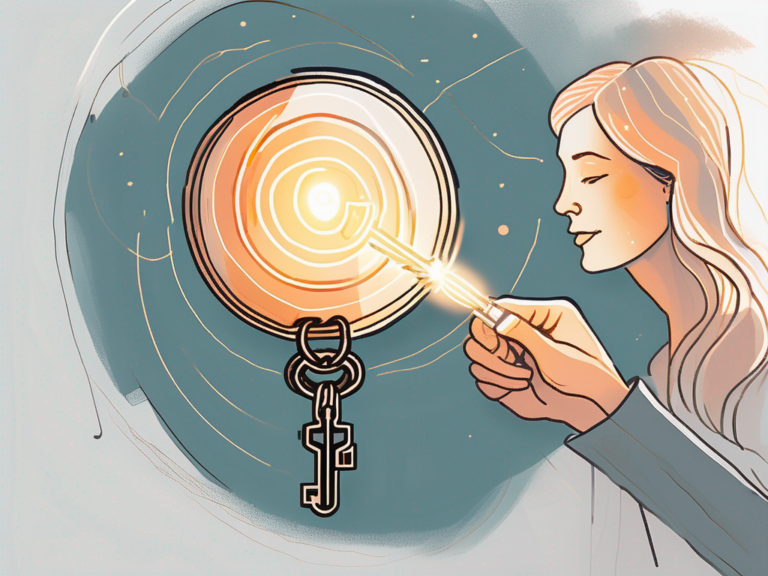When I Breathe In, I Breathe in Peace: Finding Serenity in Every Breath
In this fast-paced and chaotic world, finding peace and serenity can often feel like an impossible task. We search endlessly for ways to calm our racing minds and quiet our restless souls. But what if the answer to finding tranquility lies within us, right under our noses? The power of breath is a simple yet profound tool that can help us unlock a state of deep relaxation and inner calm. When I breathe in, I breathe in peace. Join me on this journey of understanding and harnessing the power of breath to find serenity in every breath.
Understanding the Power of Breath
Before we delve into the techniques and practices, let’s first explore the science behind the connection between breathing and relaxation. Breathing is a natural and automatic process that sustains life. However, when we consciously focus on our breath, we can tap into its incredible power to soothe our minds and bodies.
The Science Behind Breathing and Relaxation
Studies have shown that deep, diaphragmatic breathing activates the body’s relaxation response. When we take slow and deliberate breaths, our heart rate slows down, blood pressure decreases, and stress hormones reduce. This physiological response signals to our body and mind that we are safe and helps us enter a state of deep relaxation.
But the power of breath goes beyond just the physiological benefits. It has a profound impact on our mental and emotional well-being as well. When we focus on our breath, it becomes a powerful tool for managing stress and anxiety. By bringing our attention to the present moment and the sensation of breathing, we can let go of worries and distractions, allowing our minds to find calm and clarity.
The Spiritual Aspect of Breathing
However, the power of breath extends even further beyond the realm of science. Many ancient spiritual traditions, such as yoga and meditation, have recognized breath as a pathway to inner peace and spiritual awakening. Breathing mindfully allows us to connect with our inner selves, tune into the present moment, and cultivate a sense of deep spirituality within us.
In these traditions, breath is seen as a bridge between the physical and spiritual realms. It is believed that by harnessing the power of breath, we can access higher states of consciousness and tap into our true essence. Breathing becomes a sacred practice, a way to connect with something greater than ourselves and experience a profound sense of unity and interconnectedness.
Moreover, breath is often associated with the concept of prana, or life force energy. According to ancient yogic philosophy, prana is the vital energy that animates all living beings. By consciously directing and regulating our breath, we can enhance the flow of prana within us, promoting balance, vitality, and overall well-being.
Techniques for Breathing in Peace
Now that we understand the significance of breath in finding serenity, let’s explore some practical techniques that can help us harness its power.
Deep Breathing for Stress Relief
One of the simplest yet most effective techniques is deep breathing. Find a comfortable position, whether sitting or lying down, and take a slow, deep breath in through your nose, allowing your belly to rise. Then, exhale slowly through your mouth, feeling your belly sink back down. As you continue this practice, focus on the sensations of breath flowing in and out, letting go of any tension or stress with each exhale. Deep breathing can instantly trigger a state of relaxation and calmness.
Mindful Breathing for Inner Calm
Mindful breathing is another powerful technique to cultivate inner calm. Simply bring your full attention to each breath, without judgment or attachment. Notice the coolness as you breathe in and the warmth as you breathe out. Observe the sensation of breath passing through your nostrils or the gentle rise and fall of your abdomen. Mindful breathing invites you to fully immerse yourself in the present moment, letting go of worries and distractions.
The Connection Between Breath and Emotions
It’s fascinating to explore the intricate connection between our breath and our emotions. When we are stressed or anxious, our breath becomes shallow and rapid, signaling to our body that we are in a state of fight-or-flight. On the other hand, when we are calm and at peace, our breath becomes slow and deep, activating the relaxation response in our nervous system. By consciously controlling our breath, we can influence our emotional state and bring about a sense of tranquility.
The Power of Visualization in Breathwork
Visualization is a technique that can be combined with breathwork to enhance its effects. As you engage in deep breathing or mindful breathing, imagine yourself in a serene and peaceful environment. It could be a tranquil beach, a lush forest, or a cozy cabin in the mountains. Visualize the sights, sounds, and smells of this peaceful place, allowing your mind to fully immerse in the experience. This visualization can deepen your relaxation and create a stronger connection between your breath and the sense of peace you desire.
The Role of Meditation in Breathing
Incorporating breath into our meditation practice can deepen our connection with ourselves and enhance the benefits of both practices.
Incorporating Breathing into Your Meditation Practice
During meditation, focus your attention on your breath as an anchor to the present moment. Observe the natural rhythm and flow of your breath without trying to control it. If your mind wanders, gently bring your attention back to your breath. This integration of breath and meditation allows us to cultivate mindfulness and presence in every aspect of our lives.
The Benefits of Meditation and Breathing Combined
The combination of meditation and breath amplifies their individual benefits. As we deepen our breath, we also deepen our meditation practice, accessing profound states of relaxation, clarity, and insight. This synergy creates a powerful tool for self-discovery and personal growth.
Moreover, the practice of incorporating breath into meditation has been found to have numerous physiological benefits. When we focus on our breath, we activate the parasympathetic nervous system, which helps to reduce stress and promote a sense of calm and relaxation. This can have a profound impact on our overall well-being, as chronic stress has been linked to a wide range of health issues.
Furthermore, the integration of breath and meditation can also have a positive impact on our mental and emotional well-being. By directing our attention to the breath, we learn to observe our thoughts and emotions without judgment or attachment. This allows us to develop greater self-awareness and cultivate a sense of inner peace and equanimity.
Additionally, the combination of meditation and breathwork can enhance our ability to focus and concentrate. As we train our minds to stay present with the breath, we strengthen our mental muscles, making it easier to stay focused and attentive in other areas of our lives. This can be particularly beneficial for those who struggle with distractions or have demanding work or study environments.
Overcoming Obstacles to Peaceful Breathing
Although the practice of breathing for peace is simple, we may encounter challenges along the way. Let’s address some common obstacles and explore strategies to overcome them.
Dealing with Distractions During Breathing Exercises
As we embark on breathing exercises, distractions may arise, pulling us away from our focus. Whether it’s the sound of a passing car, a buzzing phone, or a wandering thought, these distractions can disrupt our peaceful state. However, it’s important to remember that distractions are a natural part of the human experience.
Instead of getting frustrated or discouraged, try acknowledging these distractions without judgment. Observe them as they come and go, like clouds passing through the sky. By gently guiding your attention back to your breath each time, you are training your mind to become more focused and resilient.
With consistent practice, you will cultivate greater control over your focus and find it easier to return to a state of peace. Just like a muscle that strengthens over time, your ability to navigate distractions will improve, allowing you to dive deeper into the tranquility of your breath.
Addressing Anxiety and Restlessness
Feelings of anxiety or restlessness may surface when attempting to find peace through breath. This is normal and understandable, considering the fast-paced nature of our modern lives. However, it is essential to approach these emotions with self-compassion and understanding.
Take a moment to investigate the root causes of these feelings. Are they stemming from external stressors or internal worries? By bringing awareness to the source, you can begin to address and release these emotions. Allow yourself the space to process them without judgment or resistance.
Remember, anxiety and restlessness are not permanent states. They are like waves in the ocean, rising and falling. With time and consistent practice, you can transform these turbulent emotions into calm and stillness. Embrace the power of your breath as a tool to anchor yourself in the present moment, allowing worries and anxieties to dissolve.
By acknowledging distractions and addressing anxiety or restlessness, you are taking proactive steps towards a more peaceful and fulfilling breathing practice. Embrace the journey, knowing that each obstacle you overcome brings you closer to the serenity that lies within.
Maintaining a Regular Breathing Practice
Like any other practice, consistency is key to reaping the full benefits of breathing for peace.
Creating a Routine for Breathing Exercises
Incorporate breathing exercises into your daily routine by setting aside time each day dedicated to this practice. Choose a specific time and place where you can comfortably engage in deep breathing or mindful breathing exercises. By making it a habit, you will establish a routine that ensures the regular nourishment of your mind, body, and soul.
Imagine waking up to the gentle rays of the morning sun, feeling the cool breeze caressing your face as you step onto your balcony. This is the perfect moment to indulge in a few minutes of deep breathing exercises. Inhale deeply, allowing the fresh morning air to fill your lungs, and exhale slowly, releasing any tension or worries that may have accumulated overnight. As you continue this practice, you will notice how it sets the tone for the rest of your day, infusing it with a sense of calm and clarity.
Staying Motivated in Your Breathing Practice
On this journey of finding serenity in every breath, it is essential to stay motivated. Surround yourself with supportive communities or find an accountability partner who shares your passion for inner peace through breath. Establish goals and celebrate small victories along the way. Remember, every breath brings you closer to your ultimate destination: serenity.
Picture yourself in a serene yoga studio, surrounded by like-minded individuals who are also on a quest for tranquility. As you engage in a group breathing exercise, you can feel the collective energy of the room, a powerful force that uplifts and inspires. The shared experience of finding peace through breath creates a sense of connection and belonging, fueling your motivation to continue this practice.
Additionally, consider keeping a journal to track your progress and reflect on the positive changes you have experienced. Write down your thoughts, emotions, and any insights that arise during your breathing exercises. This personal documentation serves as a reminder of how far you have come and can reignite your motivation during moments of doubt or fatigue.
The Impact of Peaceful Breathing on Daily Life
The benefits of cultivating serenity in every breath extend far beyond our dedicated practice time. Let’s explore how peaceful breathing can positively impact our daily lives.
Improved Focus and Productivity
By engaging in breathwork, we align our body and mind, allowing us to enter a state of heightened focus and productivity. The clarity gained from breathing with intention enables us to approach tasks and challenges with a calm and centered mindset, leading to increased efficiency and success.
Enhanced Emotional Well-being and Peace
When we breathe in peace, we invite emotional well-being and tranquility into our lives. Deep breathing activates the parasympathetic nervous system, responsible for the body’s rest and digest response. This promotes emotional balance, reduces anxiety, and cultivates a lasting sense of peace.
But what exactly happens in our bodies when we engage in peaceful breathing? When we take slow, deep breaths, we activate the diaphragm, the primary muscle responsible for breathing. As the diaphragm contracts and relaxes, it creates a gentle massage-like effect on the internal organs, stimulating blood flow and promoting overall well-being.
Furthermore, peaceful breathing has a profound impact on our brain chemistry. It triggers the release of endorphins, the body’s natural feel-good chemicals, which help reduce stress and improve mood. These endorphins not only create a sense of calm and contentment but also enhance our ability to handle stressors and challenges that arise throughout the day.
As you journey deeper into the practice of breathing for peace, remember to approach it with curiosity, openness, and patience. Each breath is an opportunity to find serenity in the present moment. Embrace the power of breath, and discover the profound peace that lies within you.






